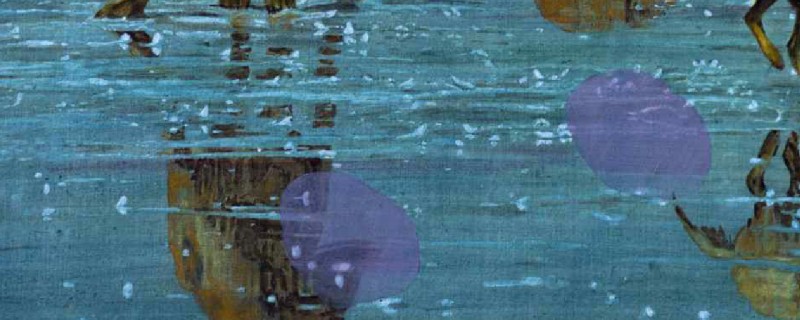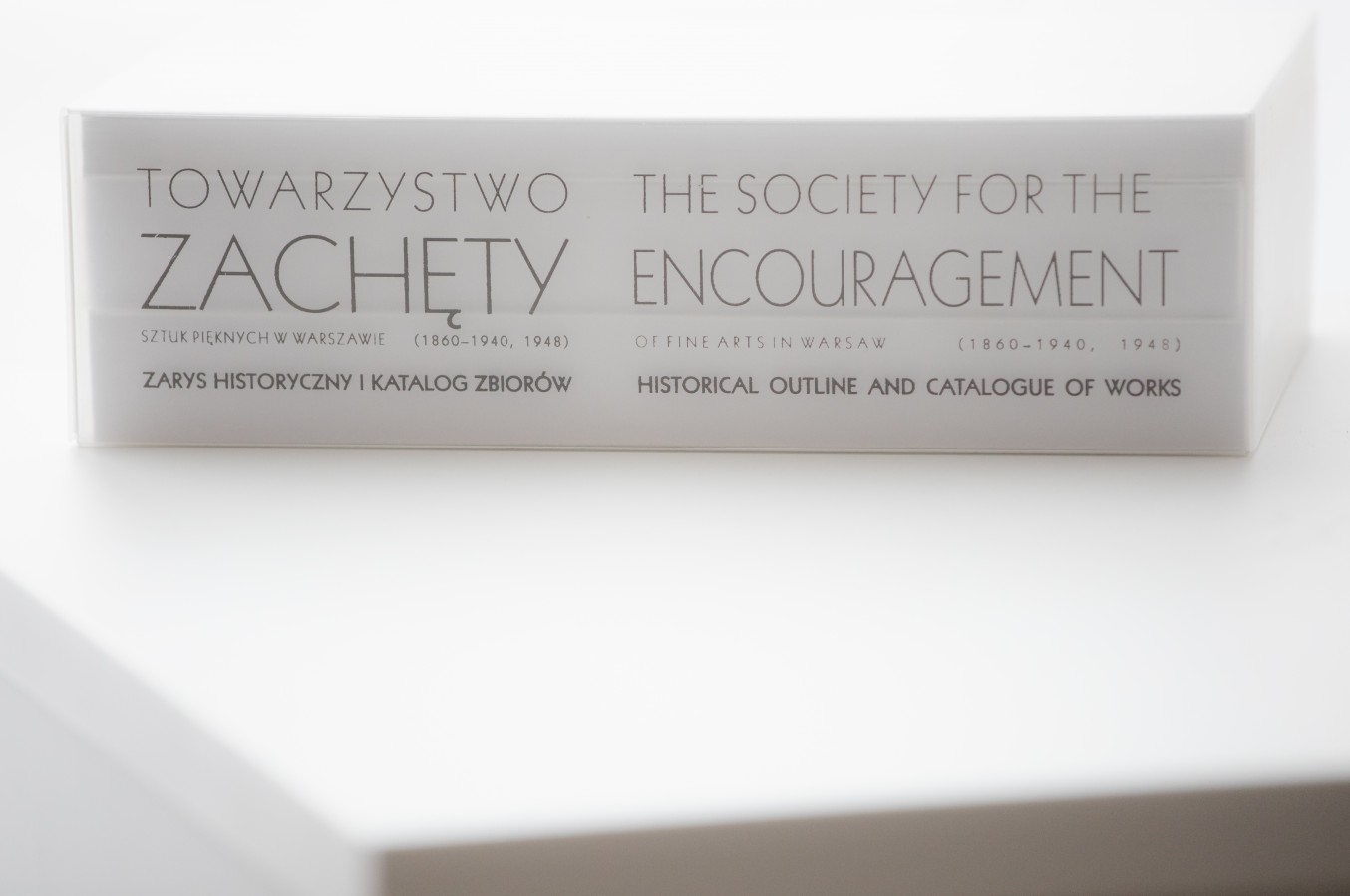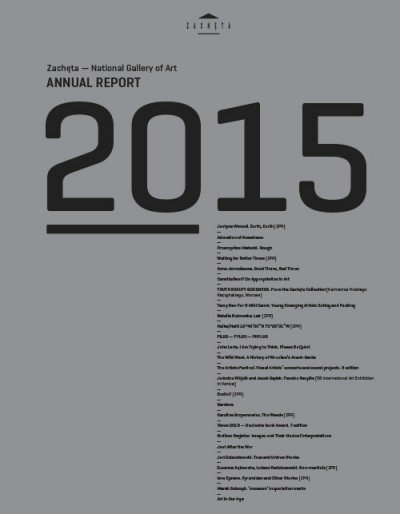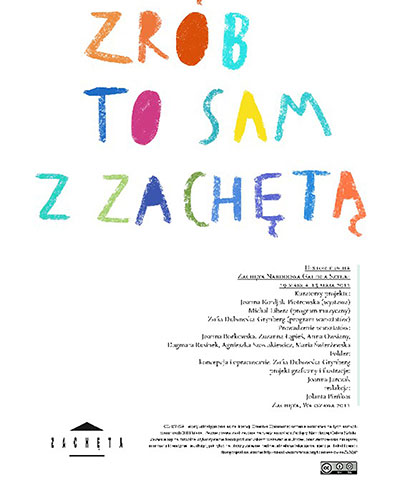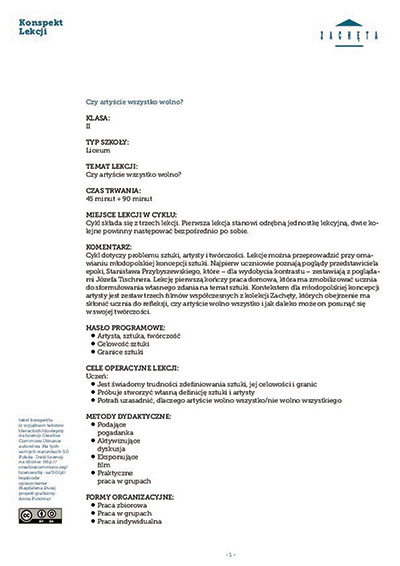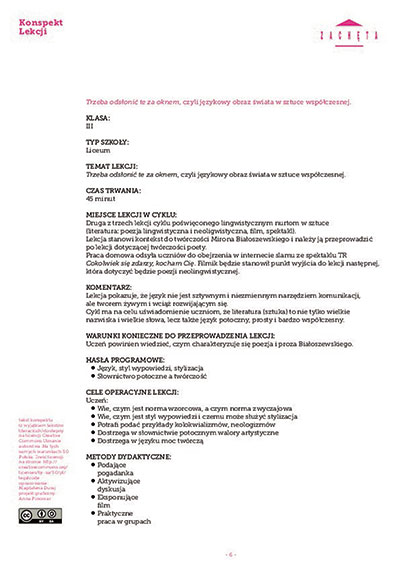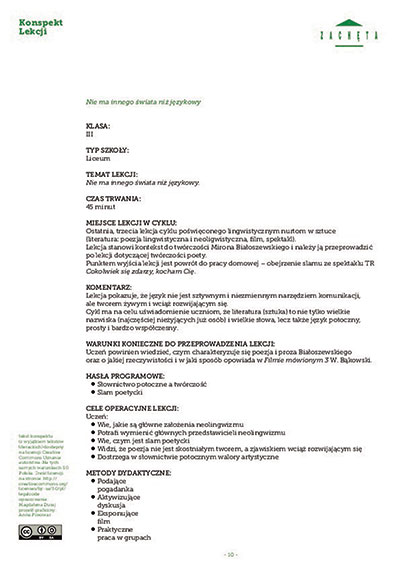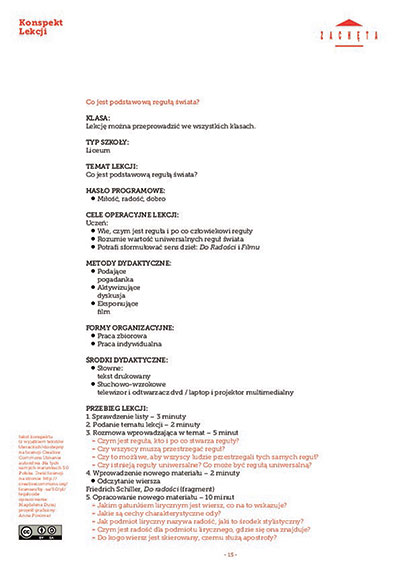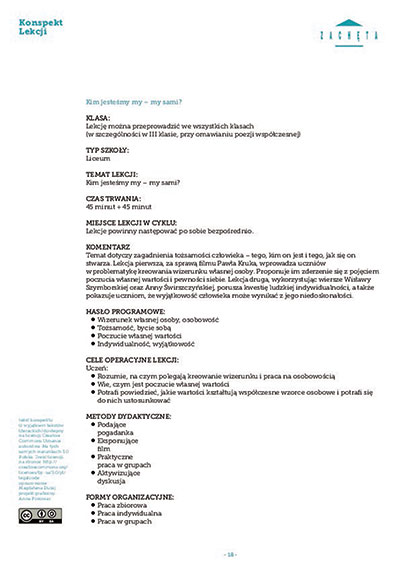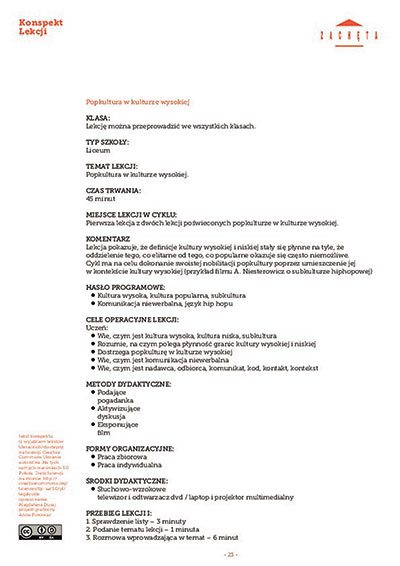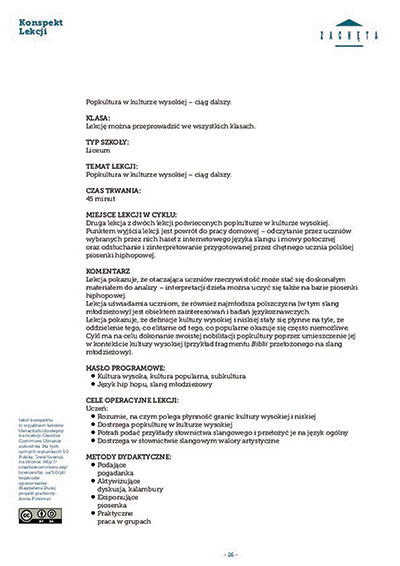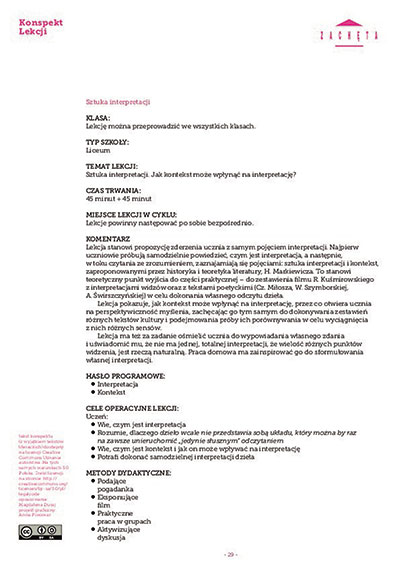Publikacja udostępniana jest na licencji Creative Commons.
publisher: Ministry of Culture and National Heritage, Warsaw 2020
Publication date: 30.03.2021
Your book The Society for the Encouragement of Fine Arts in Warsaw (1860–1940, 1948). Historical Outline and Collection Catalogue came out at the beginning of February. How did you become interested in a non-existent institution?
The most famous works on display at the Gallery of Polish Art at the National Museum in Warsaw come from the collection of the pre-war Society for the Encouragement of Fine Arts in Warsaw. When I got a job at the museum right after completing my studies in 1995, I didn’t know much about it, but I quickly started learning. In the Inventory Department of the National Museum in Warsaw, I was initially tasked with looking into the fate of museum items on loan, as decorations, to various institutions — from the Central Committee of the Polish United Workers’ Party to the then Ministry of Culture and Art. Many of these items were lost due to general mess, and the museum lost control over them having no access to ‘important’ offices of power. I wrote about it in an article published in the Muzealnictwo journal.[1]This was somewhat ridiculed in Stanislaw Bareja’s film Man — Woman Wanted (1973). I can confirm that, indeed, some museum items wandered around Warsaw following some director or minister who was appointed to yet another important post.
Later, thanks to the trust that Lidia M. Karecka (at that time Chief Registrar at the National Museum in Warsaw) placed in me, I took up research into the collection’s provenance, slightly changing my job description at the museum. This was prompted by the need to clarify the fate of — or rather to look for — the items in the museum’s collection for which claims had been made. After 1989, the National Museum in Warsaw had to handle claims for the return of property wrongfully seized during the communist times, especially in the Stalinist era. The museum was the depository for the collections seized in court proceedings, such as the Potocki collection in Krakow and Krzeszowice, the so-called country estate property, as well as items acquired as a result of the so-called repossession campaign. Although many such cases had been sorted out before my time at the National Museum in Warsaw, I still had the opportunity to work on the history of many collections, getting a lot of satisfaction from identifying items that had lost their proper provenance. Apart from digging through the archival items collected at the Inventory Department, I would run to the archives and learn about the history of the collection in this way. I think that at some point my colleagues in the archives got fed up with me... Ultimately, I would find an item, so far unknown, that was given the proper provenance. I’m an archivist-historian by education and I got to like this work very much. There were also unfounded claims, leading to lawsuits, in which I often appeared as a witness on behalf of the museum.[2]
Coming back to the question: I became more interested in the Zachęta’s collection when I collaborated with the then Department of Cultural Heritage at the Ministry of Culture that dealt with recovering Polish art lost during WWII. My role was to prepare documents for restitution applications that confirmed the origin of the items. As regards the National Museum collection, these were proofs of purchase: bills, receipts from the offer book, correspondence, inventory transcripts, as well as — if they existed —pictures of the lost items. In the case of two paintings by Julian Fałat from Zachęta’s collection that were spotted in the United States, validating the Polish claim was difficult as the Society’s archive was destroyed in a fire during WWII. Fortunately, the collection’s printed catalogues have survived and, most importantly, both paintings are listed in catalogues of wartime losses. In the process of recovering these paintings, we got a request from the ministry to compile the records of the Society’s wartime losses. Later, during one of the discussions at the ministry, an idea came up to recreate the full catalogue of the pre-war Society’s collection — based on the last printed catalogue from 1938.[3]As it turned out, the catalogue was incomplete, as it included only works by Polish artists. The previous catalogue of the Society’s collection, published in 1935, also covered only such works. You had to go back to 1933 to get a catalogue with complete information about Zachęta’s collection. By combining the information from both catalogues, it was possible to recreate the full catalogue of the Society’s collection as of 1938.
As I’ve already mentioned, I managed to study the National Museum’s archival resources, especially the documents from WWII, which have been preserved in their entirety as the museum building fortunately was not destroyed. The wartime documents mainly include archival materials of the museum’s German administration and its commissioner, Dr Alfred Schellenberg.
And Zachęta’s archives?
Unfortunately, Zachęta’ archives were burned during the Warsaw Uprising, which I write about in my text. In 1942, they were transferred to the museum together with a part of the collection, but — as a result of German decisions at the request of the municipal authorities — they were soon moved to the municipal archives in the Arsenal, where they burned down in 1944. So I had to rely on the printed reports of the Society’s authorities kept in the National Museum library in Warsaw, which, incidentally, also came from Zachęta’s pre-war library. They were digitised some time ago and they are now available online courtesy of the Mazovian Digital Library. The last report for 1938 contained information about items acquired after the publication of the 1938 catalogue of the Society’s collection.[4]That’s why my catalogue contains more items than the one from 1938. Moreover, I recreated the history of 23 deposits held at Zachęta before WWII.
The list of Zachęta’s wartime losses, compiled by Elżbieta Charazińska, curator of the Polish Modern Art Collection at the National Museum in Warsaw, was an important document that I initially relied on.[5] But, it was not a list of all of Zachęta’s losses, because Ms Charazińska only compiled a list of the Polish painting losses. So I had to focus on Polish contemporary and European painting, sculpture, numismatics and, above all, old and contemporary drawing and graphics. In this process, I also verified Zachęta’s losses as published in the 1998 catalogue of wartime losses.[6]
In the course of my work, it appeared that the 1938 catalogue did not represent the full scope of the collection, as the collection of works on paper — the graphic or drawing portfolios — were entered into the library inventory. Also, the donors of large collections were only briefly mentioned. So I undertook a short study of the collection’s history. I am not the first person to deal with the history of the Society for the Encouragement of Fine Arts — Janina Wiercińska is the author of a major study on this subject.[7] It includes a chapter on the collection which required some elaboration. One can say that the first volume of my work is to some extent a supplement to Wiercińska’s work published in the 1960s.
Have you met Janina Wiercińska?
Unfortunately not. She died before I got interested in this topic. But I met Hanna Faryna-Paszkiewicz, who worked at the desk next to Janina Wiercińska. She told me about the woman related to my work and it was very interesting to me.
My history of the collection basically ignores its profile. I write very little about exhibitions, I only mention some topics in passing because Ms Wiercińska wrote a lot on the subject, and I only expand on some issues. First of all, it is a recreation of the catalogue of Zachęta’s museum collection.
Did you manage to find new information about the Society?
I didn’t want to copy Janina Wiercińska’s work and decided to bring to light the people who created Zachęta’s collection. That’s why I wrote a little more about the donors. For example, about Leon Papieski, who hasn’t been widely known so far. So I thought that it was worth mentioning him and other donors, whose gifts have not been included in the catalogues of the collections, in the introduction to the catalogue.[8]
The Lublin motif is very interesting. It is not widely known that Zachęta had a branch in Lublin with works from the collection on deposit.
We are talking about two things. Indeed, the Society had a branch in Lublin between 1922 and 1926. But already in 1922, a deposit of 34 catalogued items from Zachęta was transferred to the Lublin Museum. The Museum in Lublin wanted to exhibit Polish art. The deposit of 34 paintings did not consist of only Polish art. It included works by Leon Wyczółkowski, Karol Miller, January Suchodolski, but also copies of European paintings. This odd mixture was probably located in the post-Piarist building, the rooms of which were not adapted for exhibition purposes. In a photo from 1930, one can see Wyczółkowski’s painting Christ, which occupies the space from floor to ceiling in the museum hall. In 1922, Warsaw’s Zachęta was rearranging the exhibition in its building, so they found it convenient to lend these items out. And in Lublin, they were happy to exhibit works of famous artists, because the collection of the local museum was rather poor at that time.
There were also plans to establish branches of the Zachęta in other cities.
The Lublin branch was the only branch of the Zachęta in Warsaw. There was also a Society for the Encouragement of Fine Arts in Bydgoszcz, based on the one in Warsaw, but I haven’t really delved into this subject. I got interested in Lublin because of Zachęta’s deposit. The Museum of the History of the City of Lublin, which is a branch of the National Museum in Lublin, has preserved the minutes of the Lublin Museum Society meetings in its archives. Among them, I found notes about the acquisition of this deposit, including the role of the artist Marian Trzebiński in this process; he was the curator of the museum and had good contacts with the Zachęta in Warsaw. Later, in the 1930s, some voices in the Lublin newspapers demanded that Zachęta should take back its deposited items to free up space for artists from the region. However, it couldn’t be done. Apart from the painting by Wyczółkowski, which returned to Warsaw for an exhibition, the other items remained in Lublin until the outbreak of the war. Because of the war, they were lost — currently, the collection of the National Museum in Lublin has only five items from the original deposit of 34. One of the paintings, which was on loan to the museum in Lublin, and was stolen from there, was found in the United States and was returned to the National Museum shortly after I started dealing with the Society’s collection. I remember how we wrote a letter to the ministry explaining that the painting had hung in the Society’s building in Warsaw until 1939! At that time, we didn’t have full knowledge of Zachęta’s collection. The painting was put on some garage sale, but it came back damaged. I can remember that there was a tread of a bicycle tire running through the centre of the painting. We managed to renovate the painting successfully, and the result can be seen in my catalogue. By the way, the painting was listed in the 1998 catalogue of Polish painting wartime losses.[9]
What do you see as your greatest success in this search?
I think my greatest success is the discovery of the images of the wartime losses. Without them, it’s hard to identify anything on the antiques market. Fortunately, the National Museum has a collection of glass negatives (90 percent of this collection survived). After the war, they began to organise the collection in a rather cursory manner. The entries in the film inventory were very brief, if any. That’s why old negative envelopes became very valuable, as they stated that the film was from Zachęta. Based on the analysis of the negatives of well-known Zachęta paintings, such as Battle of Grunwald or Aleksander Gierymski’s In the Arbour, I realized that they were signed in a similar way. The films from Zachęta had collection catalogue numbers scratched on them. I looked through a few thousand film rolls and found those from Zachęta. It was one of the ways to obtain images to look for wartime losses. The second was exhibition guides and the illustrated Zachęta catalogue from 1925. The third source was the press of the time (e.g Tygodnik Ilustrowany, Bluszcz, or Świat). The press wrote about the annual salons and exhibitions quite extensively. Pictures of the paintings exhibited at the time were very frequently published. Big donations for Zachęta ended in 1918, while the opposite was true for the museum. In independent Poland, it was the National Museum in Warsaw that benefited from the generosity of donors. In the twenty-year interwar period, apart from Papieski’s donation, Zachęta’s collection would more frequently obtain purchased items. Sometimes that would mean two paintings, sometimes five and almost all of them were exhibited at the annual salons. If they received the president’s or minister’s prize, Zachęta would buy them. That was when their pictures would most often appear in the press. The fourth source can be event photos from private family collections, which show people taking pictures of themselves in Zachęta’s exhibition halls. Recently, I found photo albums from Stanisław Brzeziński, who was the last chairman of the Society. Among the numerous family photos, I also found a photo of Chairman Brzeziński and Director Radecki-Mikulicz posing at Zachęta against the background of Jan Stanisławski’s now lost paintings.
Let’s continue the topic of donations for a while. The idea was to create a collection of contemporary Polish art. And the donations brought in items that apparently didn’t fit the profile established by the society itself. For example, the collection donated to Zachęta by Józef Choynowski.[10]
Yes, but you need to remember that the National Museum, then the City Museum, didn’t have its own seat and kept moving from place to place, while Zachęta already had its own building. And Zachęta was the only institution that could take in such a collection. Choynowski’s collection wasn’t even entered into the inventory, nor was Mathias Bersohn’s.[11] Both collections were moved to the National Museum in the early 1920s. Until then, they had been exhibited at Zachęta. At some point, someone came up with the idea to support contemporary artists by organising their exhibitions. More space was needed to make it happen, so they had to review the collection. The paintings were also sent out on loan to decorate the Łazienki complex and the Belvedere, looted by the Russians retreating in 1915. In the 1920s, there was an idea to transfer the entire Polish art collection to the National Museum. The Zachęta was supposed to be merely a building for exhibitions of contemporary artists. Perhaps if the Institute of Art Propaganda (IPS) had not been established, the idea may have been implemented before the war. But the IPS was established and Polish contemporary artists could exhibit their works there.[12] But not only that, as the IPS also exhibited ‘old art’, e.g. at the exhibition of Polish still life or the exhibition of Warsaw painting of the first half of the 19th century.
Do the documents suggest why the Society’s collection wasn’t eventually transferred to the National Museum?
Already when Bronisław Gembarzewski was the museum’s director, in the era before Stanisław Lorentz, draft contracts were prepared.[13]However, they were never finalised. I think it was caused by ownership problems — the National Museum in Warsaw was administered by the city, and Zachęta was owned by the Society. There was also an idea to merge the State Art Collections, the National Museum and Zachęta to create a gallery of Polish art. The Baryczków’s tenement house hosted the State Gallery of Polish Art (since 1932) not being a building fully adapted for this purpose, so the exposition wasn’t large. Apart from a few small deposits from Zachęta, it only showed items from the State Art Collections. No paintings from the National Museum were exhibited. The idea of consolidating these collections emerged after the war, when both Zachęta and the State Art Collections ceased to exist, and everything that survived the war was incorporated into the museum’s collection. As a result, the most important works of Polish art were exhibited in Warsaw in one place.
You wrote that Zachęta was transformed into the Central Bureau of Art Exhibitions due to pressure from the artistic community. The artists said they needed a decent location for decent art, and the pre-war Zachęta Gallery exhibited works of dubious quality. That’s why the ministry decided not to reactivate the Society.
Interestingly, some of the artists who demanded a place to show decent art were very often exhibited in the halls of the pre-war Zachęta. Maybe they had a short memory? After the liquidation of the Society, the collection was intended to be taken over by the Association of Polish Artists and Designers, which in the end never happened.I don’t know if the Association is aware of that.
Is there a list of artworks that are still searched for?
All this information is included in a catalogue containing 940 index cards (917 from own collection and 23 deposits). A third of the works are still missing. Images are available for a third of those missing, so there is a chance that they can be identified and found. There are a few items that come and go on the antiques market. However, one must be careful in the identification process as artists produced similar works. As regards the images — I was very cautious about them. My biggest problem was the artist Teodor Ziomek, who produced a million paintings titled Spring, Summer, Autumn, Winter. Because I’ve found several versions of the paintings with identical titles, reproduced, among others, on postcards, I am not sure which of them are the ones from Zachęta’s collection. Maybe other sources will be found someday.
The works in the Society’s collection were of varying artistic quality. As some 30 percent of the collection haven’t been found yet, which works would we most like to recover?
Preferably all, but that’s not possible because some of them have been completely destroyed. The lost works include, for example, those by Leon Wyczółkowski, which I have identified. A catalogue of the painter’s retrospective exhibition was published in 1937 and all the paintings were described in detail there. In the Museum of Warsaw I’ve found several photographs of the Zachęta halls, where in the distance, among Wyczółkowski’s paintings, one can see Portrait of the Housekeeper, which I identified thanks to the description in that exhibition catalogue. The Museum’s war records have proved to be a very good source for obtaining the images of wartime losses. This includes a preserved fragment of the underground effort managed by Jan Morawiński,[14] father of Agnieszka Morawińska — the long-time director of the Zachęta and the National Museum. When the Germans ‘borrowed’ museum items, museum employees conspired to make descriptions of the paintings and their sketches on small pieces of paper. They were very talented people. More than a dozen of such sketches are in the catalogue in place of the missing photograph. I have included several photos of the paintings and sketches to enable the reader to see how accurately the details of the painting were reproduced.[15]
It is a very touching story...
The catalogues of Polish painting wartime losses published so far haven’t used this source at all. I’ve brought these drawings to light.
So were you the first investigator to find them?
It’s hard to say that I found them, because they were in a generally accessible box in the Inventory Department, except that no one had looked into them.
How helpful are these drawings in recovering the works?
The file contains several dozen index cards, arranged according to private owners or institutions. These are sketches of items from various fields, e.g. decorative art, not only paintings. A sheet of graph paper folded in half, contains information about the owner, the details of the work, including the dimensions and signatures as well as the ownership marks copied from the reverse, with a sketch of the item usually made on cardboard inside. The index cards marked as the Zachęta’s property don’t only cover its museum collection. The heading ‘Zachęta’ includes paintings of private persons, which were brought to the museum as unclaimed after the exhibition of the 40th anniversary of the Society.[16] As a result of the outbreak of the war, these items were not returned to their owners, and in the meantime, the Germans took the more attractive ones to decorate their offices and flats. So here you will also find the sources for searching for the wartime losses of private individuals.
They must have risked a lot by making these sketches?
Yes, it was a life-threatening job requiring great courage. At this point, I would like to mention Jan Morawiński, who died at the age of only 42 (in 1949). Morawiński appears in the wartime memoirs of the employees of the National Museum in Warsaw published in the 1960s in the Yearbook of the National Museum in Warsaw. His contribution to saving Polish cultural heritage is somewhat underestimated, so I decided to write an article about him for this year’s issue of the Muzealnictwo journal. It is also worth mentioning other employees of the National Museum in Warsaw: Prof. Michał Walicki and Dr Jerzy Sienkiewicz, who were in turn involved in the underground effort of the Home Army. In 1949, they were imprisoned by the secret police and only released in 1953. Unfortunately, they never returned to the museum. They have been underestimated because of the prevalent stereotype emphasising the role of Prof. Stanisław Lorenz in the National Museum. I mention Jan Morawiński in my book about the Zachęta, because it is thanks to him that these sketches were created. He made some of the sketches, but, as I mentioned, he managed the entire effort. Apart from him, the descriptions and sketches were made by: Stefan Kozakiewicz, Maria Friedlein-Bogucka, and Zygmunt Miechowski — based on the handwriting I’ve been able to identify who was the author of the sketch.
The archives burned down during the uprising in 1944 could be interesting.
Printed reports are the preserved source. They included annotations that might help discovering that, for instance, some main register existed. You can find some provenance information there. We know what was there in the Society’s archive — there is a list of the contents of the boxes that arrived at the museum in 1942. There is also a receipt from the city clerk who transported these items to the archives.
So we know what was there, but we don’t know the details.
These were books of minutes of the meetings mentioned in the reports. The main register, which is probably the inventory, was definitely lost. These documents also included Zachęta’s chronicle — fair copy and draft — written by Jerzy Chyczewski. I found confirmation that Chyczewski had collected the chronicle and, unfortunately, it was probably lost. My book is based on printed sources or files that were produced at the National Museum already during the German occupation. I mentioned the 40th anniversary exhibition — the last exhibition in the Zachęta building. In the summer of 1939, there was also Henryk Siemiradzki’s exhibition.[17] The owners of the works hadn’t managed to collect their items from the Zachęta building and would pick them up only in November and December 1939 at the National Museum. But they had to bring a receipt (authorisation) with the imprint of the Society for the Encouragement of Fine Arts — these were A4-format documents, signed by administrative director Stanisław Radecki-Mikulicz. At that time, Jan Morawiński was in charge of the collection and inventory in the museum, and he released these items on the basis of the receipts. A few years ago, Siemiradzki’s painting Sword Dance was found at Sotheby’s, it was listed in the catalogue of the artist’s exhibition at Zachęta in 1939 and considered a wartime loss. The painting was seized as a result of the ministry’s intervention, but it turned out that the owner had managed to collect it from the National Museum in Warsaw, and the confirmation of this fact is in the Museum’s archives.
I would like my work to help raise the awareness that provenance research materials do exist, even though the archives were burned down. Information on wartime losses needs to be verified all the time. It will never be a completed task.
What was the biggest discovery at the time of writing your book?
Apart from making use of the wartime sketches, the visit to Lublin was also interesting. I think that my knowledge has also proved useful to my colleagues from Lublin, because at the same time I did some verifying of the list of wartime losses of the Lublin Museum that existed in the ministry. Some of the items on this list were unrecognized paintings from the Zachęta, which, as I mentioned, had been on deposit there since 1922. Thanks to the kindness of Grażyna Jakimińska, who was then the deputy director of the Lublin Museum, I obtained access to the materials — reports of the Lublin Museum Society, catalogue index cards made during the war, Lublin newspapers and press clippings.
Identifying Zachęta’s wartime losses published in the catalogues of Warsaw auction houses also gave me a lot of satisfaction. For example, the Society’s archives held a collection of eight illustrations by Michał Elwiro Andriolli for Antoni Malczewski’s novel Maria. One drawing has been held in the collection of the National Museum in Warsaw since 1942, the others seemed to be irretrievably lost until recently. In the archival materials documenting the securing of the collection at Zachęta in September 1939 (this is hardly ever mentioned, and I’ve even read in an article that the Zachęta didn’t secure its items at all, which is not true), I came across such lists, where eight works by Andriolli were noted in one of the boxes. In 2013, I was browsing through the DESA UNICUM auction catalogue and there I saw five of Andriolli’s drawings known to me from the negatives. I quickly got in touch with the Ministry of Culture and National Heritage (I think I was the first to notify the ministry about it) and the drawings were soon removed from the auction. I hope they will be formally recovered soon. Recovering wartime losses is a difficult process that quite often depends on the goodwill of the owner. Recently I also managed to identify Zdzisław Jasiński’s painting On the Feast of Our Lady of the Herbs, as well as Józef Simmler’s Portrait Sketch in the National Museum’s warehouse, and also, with the help of Renata Higersberger, Portrait of a Lady by Anna Bilińska. These paintings have been listed as wartime losses, so it can be said that they have already been ‘recovered’.
I’m currently researching the collection of the pre-war Józef Piłsudski Museum at the Belvedere palace, which was scattered after the war, and many of the items previously held there appear on the antiques market. Perhaps one day I will manage to recreate and publish this museum’s catalogue, as I did at Zachęta.
Roman Olkowski — senior curator, from 2013 head of the Collection Department at the Józef Piłsudski Museum in Sulejówek, previously employee of the Department of the Chief Registrar of the National Museum in Warsaw, then research specialist into the provenance of the National Museum collection, appointed by Piotr Piotrowski to hold the first position of this kind in Poland.
[1] Roman Olkowski, ‘O badaniu proweniencji muzealiów’, Muzealnictwo, v. 53, pp. 27–37, 2012.
[2]Lidia M. Karecka, ‘Mienie zwane podworskim w Muzeum Narodowym w Warszawie’, Muzealnictwo , v. 53, pp. 44–57, 2012.
[3]Katalog zbiorów Towarzystwa Zachęty Sztuk Pięknych w Warszawie, Warsaw: Wydawnictwo Towarzystwa Zachęty Sztuk Pięknych, 1938. Cf. http://mbc.cyfrowemazowsze.pl/dlibra/docmetadata?id=57247&from=&dirids=1&ver_id=&lp=1&QI=, access: 22 February 2021.
[4]Sprawozdanie Komitetu Towarzystwa Zachęty Sztuk Pięknych za rok 1938, Warsaw: Wydawnictwo Towarzystwa Zachęty Sztuk Pięknych, 1939. Cf. http://mbc.cyfrowemazowsze.pl/dlibra/docmetadata?id=35308&from=publication, access: 22 February 2021.
[5] Elżbieta Charazińska, Straty wojenne obrazów z malarstwa polskiego w zbiorach Towarzystwa Zachęty Sztuk Pięknych w Warszawie, 1993, ts.
[6]Anna Tyczyńska, Krystyna Znojewska, Straty wojenne, malarstwo polskie, obrazy olejne, pastele, akwarele utracone w latach 1939–1945 w granicach Polski, Poznań: Bogucki Wydawnictwo Naukowe, 1998.
[7] Janina Wiercińska, Towarzystwo Zachęty Sztuk Pięknych w Warszawie: zarys działalności, Wrocław: Zakład Narodowy im. Ossolińskich Wydawn. Polskiej Akademii Nauk, 1968. Janina Wiercińska (1922–2003) — professor of art history, research fellow at the Institute of Art of the Polish Academy of Sciences from 1953 to 1992.
[8] Leon Papieski (1858–1917) — barrister, vice president of the Court of Appeal in Warsaw.
[9]Marian Trzebiński (1871–1942) — painter, co-founder and the first curator of the Lublin Museum in Lublin, opened in 1923.
[10] Józef Choynowski (1833 – ca. 1915) — collector of archaeological relics, amateur archaeologist.
[11] Mathias Bersohn (1823–1908) — merchant, industrialist, art historian.
[12]The Institute of Art Propaganda existed in 1930–1939.
[13] Bronisław Gembarzewski (1872–1941) — painter, museologist, military man, director of the National Museum in Warsaw in 1916–1936. Stanisław Lorentz (1899–1991) — professor of art history, museologist, director of the National Museum in Warsaw in 1936–1982.
[14]Jan Morawiński (1907–1949) — art historian and museologist.
[15]Towarzystwo Zachęty Sztuk Pięknych w Warszawie: Leon Wyczółkowski (1852–1936), exh. cat., Warsaw: Wydawnictwo Towarzystwa Zachęty Sztuk Pięknych, 1937. Cf. http://mbc.cyfrowemazowsze.pl/dlibra/docmetadata?id=38629, access: 22 February 2021.
[16]Wystawa pierwszego czterdziestolecia TZSP (1861–1900), June–September 1939, exh. cat., Warsaw: Wydawnictwo Towarzystwa Zachęty Sztuk Pięknych, 1983.
[17]Henryk Siemiradzki (1843–1902), exh. cat., Warsaw: Wydawnictwo Towarzystwa Zachęty Sztuk Pięknych, 1939.
